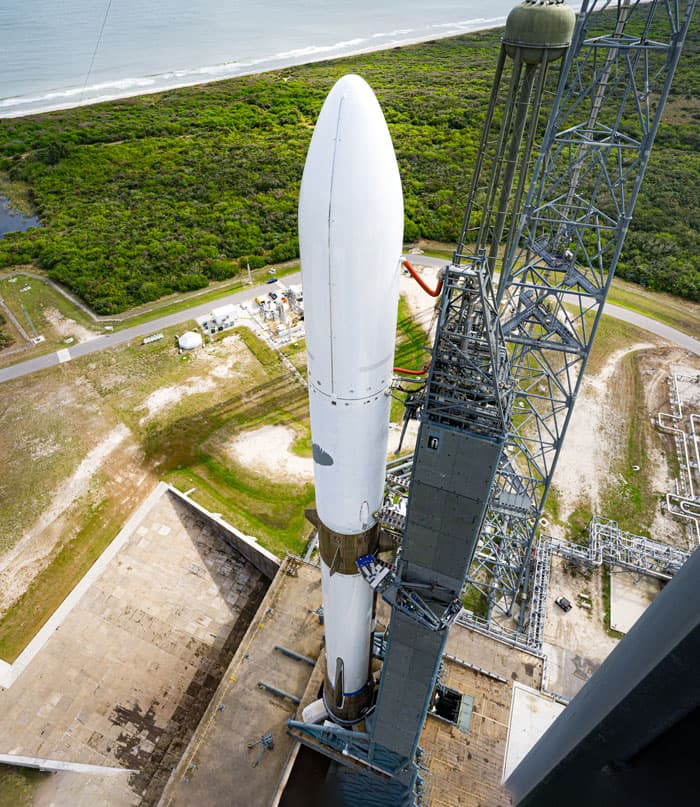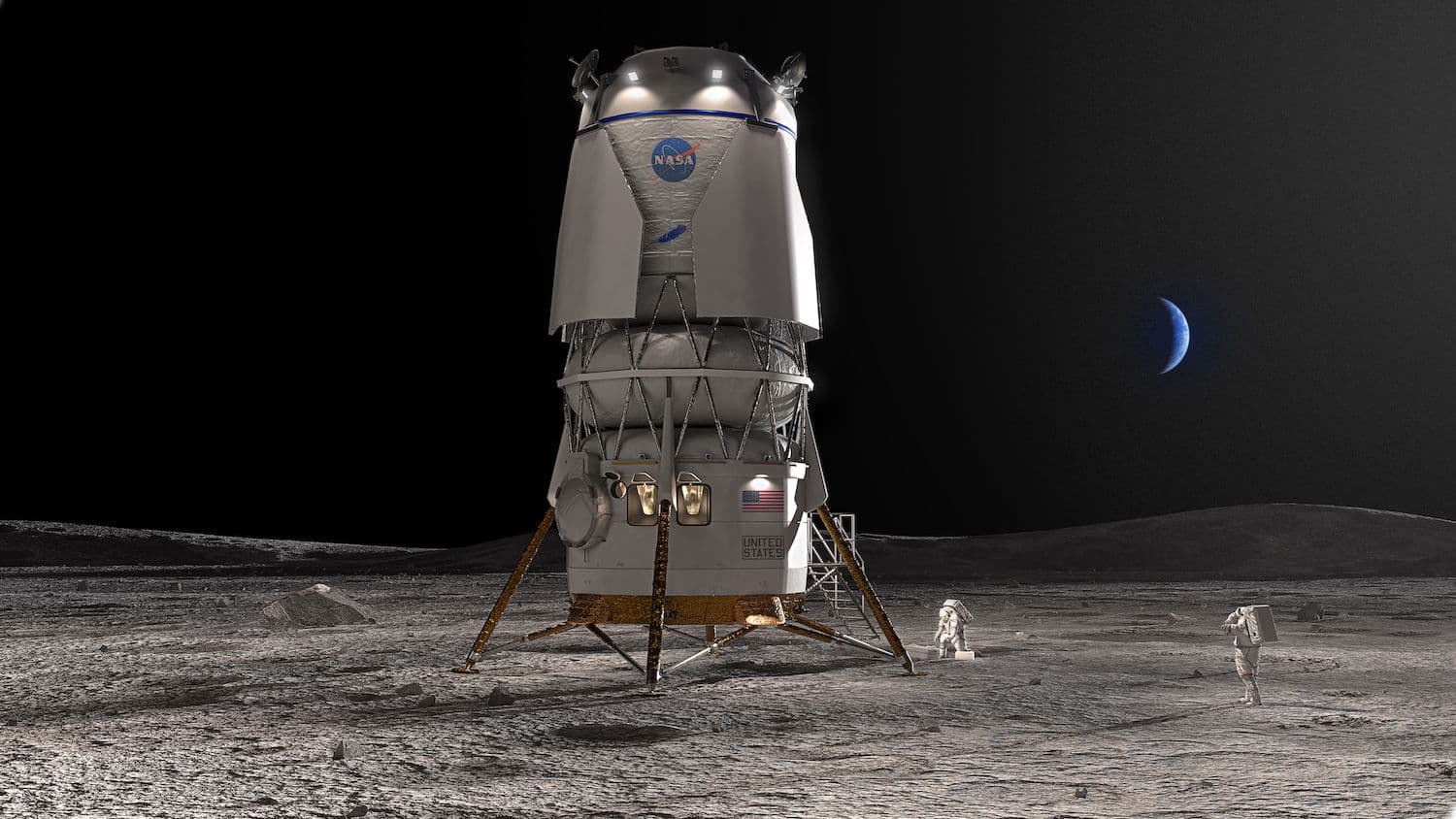Blue Origin just achieved another impressive milestone with its new heavy-launch vehicle, the partially reusable New Glenn rocket. On Thursday, Nov. 13th, during what was only the second launch of the New Glenn (NG-2), Blue Origin launched a NASA payload destined for Mars. This was the ESCAPADE (Escape and Plasma Acceleration Dynamics Explorers) mission, a pair of twin satellites that will study how solar wind interacts with Mars’ magnetic environment and how this interaction drives atmospheric escape.
Unlike the inaugural flight, this launch also saw the company successfully retrieve the rocket's first stage, fulfilling Blue Origin's promise that the New Glenn system would achieve partial reusability. Shortly after these milestones were achieved, Blue Origin released a statement outlining the next steps for its heavy-lift vehicle, which will include structural enhancements, as well as upgrades in propulsion, avionics, reusability, and recovery. The company also plans to develop a "super-heavy" version of this vehicle, likely intended to make the New Glenn a fitting rival for SpaceX's Starship.
In terms of propulsion, the new enhancements will consist of higher-performing thrusters on both the first and upper stages. Currently, the New Glenn relies on seven BE-4 booster engines, which were designed to generate 2,400 kN (550,000 lbf) of thrust at sea level - for a total of 16,800 kN (3.5 million lbf). The new upgraded versions will reportedly deliver 2,847 kN (642,850 lbf) of thrust each, for a total of 19,928 kN (4.5 million lbf). Per their statement, the company has reportedly demonstrated capabilities of up to 2,780 kN (625,000 lbf) on the test stand and will achieve 2,847 kN (640,000 lbf).
 *A fully-stacked New Glenn rocket at Launch Complex 39A at NASA's Kennedy Space Center at Cape Canaveral, Florida. Credit: Blue Origin*
*A fully-stacked New Glenn rocket at Launch Complex 39A at NASA's Kennedy Space Center at Cape Canaveral, Florida. Credit: Blue Origin*
Meanwhile, the company also indicated that the enhanced BE-3U thrusters (two of which power the upper stage) will deliver 1,779 kN (400,000 lbf) of thrust, up from the original design of 1,423 kN (320,000 lbf). While the new BE-4 will be phased in as soon as the New Glenn's next launch (NG-3), the improved BE-3U is expected to be integrated over the next few missions. Per the company statement:
These enhancements will immediately benefit customers already manifested on New Glenn to fly to destinations including low-Earth orbit, the Moon, and beyond. Additional vehicle upgrades include a reusable fairing to support increased flight rates, an updated lower-cost tank design, and a higher-performing and reusable thermal protection system to improve turnaround time.
Beyond this, the company has stated that its next step will be to develop a super-heavy version of the rocket named the New Glenn 9x4, referring to the number of BE-4 and BE-3U engines powering its stages. It will also feature a larger payload fairing measuring 8.7 meters (~28'6.5'' ft) in diameter, compared to the current 7-meter (23-foot) fairing. Per their design specifications, this launch vehicle will be able to deliver 70 metric tons to Low Earth Orbit (LEO), 14 metric tons to Geosynchronous Orbit (GSO), and 20 metric tons to a Trans-Lunar Injection (TLI) - i.e., to the Moon.
Blue Origin also plans to conduct launches using both the enhanced and "super heavy" versions of its New Glenn rocket. Both rockets are intended to improve rocket performance and launch cadence, and to ensure that Blue Origin remains competitive in the growing satellite launch market. Meanwhile, many commercial launch providers have emerged in the past decade to challenge the near-monopoly SpaceX has enjoyed until now. In essence, the race is on to secure the largest possible share of what will become a $35.95 billion industry by 2030.
 *Artist's impression of the Blue Moon lunar lander. Credit: Blue Origin*
*Artist's impression of the Blue Moon lunar lander. Credit: Blue Origin*
Similarly, Blue Origin is slated to provide crew and payload services through NASA's Artemis Program, specifically for Artemis V and VI missions. While nothing is certain beyond Artemis III* at this point, thanks to the current administration's FY 2026 Budget Request, the proposed cancellation of the Space Launch System (SLS), Orion spacecraft, and Lunar Gateway* could mean that NASA will be outsourcing both its launch and crewed spacecraft needs to the commercial sector.
In addition, acting NASA Director Sean Duffy recently announced that the agency would once again be seeking competitive bids for a Human Landing System (HLS), citing delays in the Starship's development. Lastly, Blue Origin hopes to secure additional contracts with NASA for deep space exploration (a la the ESCAPADE mission) and national security programs like Golden Dome.
Further Reading: Blue Origin

